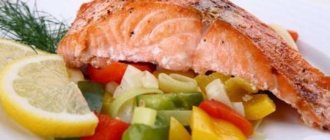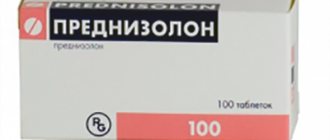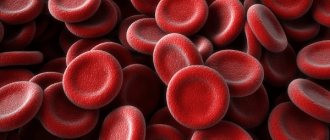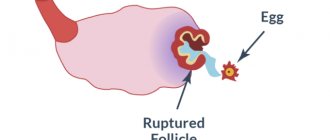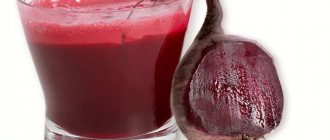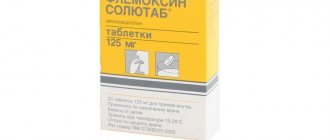- Human platelets are colorless, disc-shaped, anucleate blood cells that play a major role in blood clotting (forming blood clots and stopping bleeding).
- Platelet transfusions are indicated for thrombocytopenic bleeding caused by insufficient platelet formation (leukemia, exposure to cytostatics, radiation, aplastic syndrome), increased destruction (extracorporeal circulation) or increased consumption (acute disseminated intravascular coagulation syndrome, “washout thrombocytopenia”).
- The use of modern protocols for the treatment of oncohematological patients and the introduction of high-dose chemotherapy into oncohematological practice are impossible without intensive accompanying therapy, one of the integral components of which is transfusion of platelet concentrates.
- Among hematological cancer patients, 47% require transfusion of 2 or more therapeutic doses of platelets, and transfusion of 3 or more doses is associated with longer treatment.

Transfusion of at least 300 billion platelets (3.0•1011), obtained in one procedure from one donor, is a therapeutically effective treatment measure that ensures the cessation of spontaneous bleeding in patients with leukemia and aplastic anemia, preventing bleeding during surgical interventions, including abdominal ones performed in conditions of deep thrombocytopenia.
Haemonetics MCS+ cytoplasmpheresis device.
- A rational method for obtaining platelet concentrate in a therapeutic dose from one donor is the method of hardware plateletpheresis, performed using a special apparatus (separator) and polymer containers.
- The plateletpheresis procedure includes connecting the donor to the device, drawing blood, filtering platelets, returning autoerythrocytes and autoplasma to the donor.
- During the plateletpheresis procedure, sodium citrate is used to prevent blood clotting.
The basis of the action of citrate is that it binds calcium ions (calcium ions are necessary in the process of blood clotting), which is why when donating platelets, unpleasant sensations in the muscles of the face and hands are possible.
To prevent and treat such reactions, the donor is given intravenous calcium glucanate to restore calcium levels in the body.
In addition, we recommend that regular platelet donors take calcium-containing vitamins as well as calcium-rich foods.
Such a disposable closed system is installed in the device immediately before the procedure for each donor.
Read about the nutrition of platelet donors in the “Nutrition of Donors” section.
The hardware platelet harvesting method allows you to obtain a full therapeutic dose of platelets from one donor in one procedure using a blood cell separator using the single-needle method.
Hardware plateletpheresis is an absolutely safe process for the donor. There is absolutely no chance of infection from a previous patient, since a closed, disposable system is used, where the plateletpheresis machine is charged immediately before each donor.
Platelets are completely restored in 2-5 days. Any healthy person under the age of 50 can become a platelet donor.
You can donate platelets no more than 12 times a year.
The procedure lasts about 1.5 hours. The total time you will have to spend with us is about 2.5 hours.
How to quickly increase platelets in the blood after chemotherapy, foods, drugs, medications
Cancer indiscriminately affects both children and older people. The number of cancer patients is increasing every day. The most effective method of combating a malignant tumor is chemotherapy, which significantly increases the chances of recovery.
Chemotherapy is a serious burden on the body, which an experienced oncologist at the Yusupov Hospital will inform you about.
The medical institution is one of the leading Russian centers, where not only diagnostics and treatment are carried out, but also their own clinical research in relation to cancer diseases is introduced into practice.
This allows the use of chemotherapy drugs that cannot be treated in other oncology hospitals. Chemotherapy treatment is not prescribed if there is no morphological conclusion about the nature of the tumor and its type.
A significant portion of cancer diagnoses require additional tests that not only confirm the cancer, but also make significant adjustments to the treatment protocol, as well as identify the sensitivity of the tumor to a specific drug.
Treatment with antitumor drugs is impossible without consequences: drugs destroy not only aggressive cells, but also healthy structures. One of the unpleasant side effects is thrombocytopenia after chemotherapy.
The main danger is that any physical activity can lead to internal bleeding.
Patients of the Yusupov Hospital receiving antitumor therapy are under strict medical supervision to prevent undesirable consequences that are typical during cancer treatment.
Medicines
Thrombocytopenia manifests itself after chemotherapy by the formation of painless bruises on the skin. If measures are not taken, then further hemorrhages will be accompanied by bleeding from the nasal passages, gums, and blood in the urine and feces.
Medications help raise platelets quickly after chemotherapy.
Specific medications include:
- Etamzilate is a synthetic drug that has a hemostatic effect. It is a powerful angioprotector. Promotes platelet aggregation, which leads to reduced bleeding. The medicine must not be taken together with antibiotics and anticoagulants. The interaction of Etamzilate with drugs that inhibit blood clotting is especially dangerous. The drug is contraindicated in patients with thrombosis of blood vessels. Many patients are interested in whether it is possible to do chemotherapy for deep vein thrombosis. Information on this topic can only be obtained from an oncologist. Each patient’s body is individual, so a specialist will tell you about the treatment and the nuances of therapy.
- Vikasol and aminocaproic acid are drugs that have proven effective in complex therapy in the treatment of thrombocytopenia;
- Derinat. To help a weakened body recover, oncologists, in combination with drugs that increase platelet levels, prescribe immunostimulants. Derinat will help to significantly increase the body's defenses, which normalizes regeneration processes, increases resistance to infections, and also has a stimulating effect on the lymphatic system, significantly reduces the sensitivity of cells to toxic effects, which is very effective in chemotherapy;
- Thrombopoietin is a hormone that is synthesized in the body and stimulates the production of platelets. Today there are drugs whose main active ingredient is thrombopoietin. Medicines are actively used in the fight against acute forms of leukemia due to their ability to increase the number of platelets.
- platelet concentrate
Nutrition and diet
In addition to therapeutic treatment, the clinic develops an individual diet, which is necessary for the restoration of the body.
Our own catering service will satisfy the most demanding patients. The dietary menu and set of permitted dishes are determined by the attending physician in accordance with the recommendations of a nutritionist.
A unique diet for patients who have low platelets after chemotherapy includes a group of foods that contain components necessary to build the supporting structure of platelets. The hospital's nutritionists recommend including foods rich in plant-based protein in your diet.
Nutrition after chemotherapy should be balanced and healthy, having a beneficial effect on the circulatory system. The menu must include vegetables, fruits, berries, and herbs. It is advisable to limit animal fats, and ideally eliminate them. A worthy replacement for fat is sunflower or olive oil.
Recommended diet, or which foods can raise platelets after chemotherapy:
- low-fat chicken broth;
- bakery products made from rye flour;
- vegetable salads with the addition of herbs and vegetable oil;
- fish dishes (steam cutlets from low-fat fish, boiled fish);
- boiled chicken meat;
- porridges, pasta from durum wheat;
- fruit juices, compotes;
- nuts, raisins, figs.
Reasons for deterioration in performance
In the treatment of cancer tumors, so-called cytostatics are used - substances that aggressively affect certain groups of cells. Typically, chemotherapy drugs only affect rapidly multiplying cells, which include cancer cells, but not most tissue cells. However, there are several types of cells in the body that normally develop quite quickly, and they suffer the most during chemotherapy. First of all, we are talking about bone marrow cells.
- Bone marrow is responsible for hematopoiesis: thanks to it, human blood is constantly renewed and enriched with blood cells.
- Bone marrow cells divide very quickly, and therefore cytostatics affect them along with tumor cells, which causes many side effects.
- As a result, a common occurrence during chemotherapy and after it is blood depletion and a serious decrease in its parameters. In the blood, the concentration of almost all of its constituent elements, which include erythrocytes, leukocytes and platelets, quickly decreases.
The consequences of a drop in blood counts are quite serious. To avoid other diseases, a person is prescribed maintenance treatment during and after chemotherapy, but you can partially help yourself recover. Of course, after consulting a doctor.
What foods can increase platelet levels?
Platelets are the cells responsible for the blood clotting process. A reduced platelet count can be restored with dietary changes. Thus, the coagulation process is normalized by foods rich in folic acid, vitamins B12, C, D, K and iron.
Folic acid
Folic acid is a synthetic form of folate. According to the National Institutes of Health (NIH), USA, the daily intake of folate for adults is at least 400 mcg, and for pregnant women - at least 600 mcg.
Foods containing folates:
- dark green vegetables such as spinach and Brussels sprouts;
- beef liver;
- black Eyed Peas;
- fortified breakfast cereals;
- yeast.
It is worth considering that excess amounts of folate obtained from fortified foods and supplements can negatively affect the absorption of vitamin B12.
Vitamin B12
This vitamin is involved in the process of hematopoiesis. A decrease in its level leads to a decrease in the number of platelets. According to the NIH, the daily requirement for vitamin B12 for adults is 2.4 mcg, for pregnant and breastfeeding women - 2.8 mcg.
Foods rich in vitamin B12:
- beef;
- eggs;
- fish, including shellfish, trout, salmon and tuna;
- dairy products.
Vegetarians can get vitamin B12 from the following foods:
- enriched breakfasts;
- soy milk;
- additives.
- Vitamin C
- This vitamin is involved in the regulation of immune processes, platelet functioning, and iron absorption.
- Many fruits and vegetables contain vitamin C, including:
- broccoli;
- Brussels sprouts;
- citrus;
- kiwi;
- red and green peppers;
- strawberry.
It is important that vitamin C is destroyed at high temperatures, so it is better to consume the listed foods unprocessed.
Vitamin D
Vitamin D is responsible for the functioning of the immune system, bone, muscle and nervous tissue. Vitamin D synthesis occurs under the influence of sunlight. According to the NIH, the daily requirement for vitamin D for adults is 15 mcg.
Food sources of vitamin D include:
- egg yolk;
- fatty fish such as salmon, tuna and mackerel;
- fortified dairy products.
Vegetarians can get vitamin D from fortified breakfast cereals, concentrated orange juice, supplements, and mushrooms.
Vitamin K
Vitamin K is involved in blood clotting and bone metabolism. According to the NIH, the daily requirement for vitamin K for men is 120 mcg and for women it is 90 mcg.
Vitamin K Rich Foods:
- natto (fermented soybean dish);
- greenery;
- broccoli;
- soybeans and soybean oil;
- pumpkin.
Iron
Iron plays an important role in the process of hematopoiesis. According to the NIH, the daily intake of iron for men and women (over the age of 50) is 8 mg, for women aged 19-50 years - 18 mg, for pregnant women - 27 mg.
Iron-rich foods:
- oysters;
- beef liver;
- enriched breakfasts;
- white beans and kidney beans;
- dark chocolate;
- lentils.
What foods should you exclude from your diet?
Foods and drinks that can lower your platelet count:
- alcohol;
- aspartame, an artificial sweetener;
- cranberry juice;
- quinine.
Symptoms of a low platelet count include:
- dark red spots on the skin;
- headache after minor injuries;
- spontaneous or excessive bleeding;
- increased bleeding of the gums.
People who experience these symptoms should consult a doctor immediately.
Based on materials from www.medicalnewstoday.com
Nutrition after procedures
Doctors recommend adhering to a certain restriction in food intake for some time. This is due to the fact that the body's systems, including the digestive system, have been negatively affected and stopped working normally. All this has led to the fact that patients quite often suffer from:
- nausea and vomiting,
- lack of appetite,
- In addition, the mucous membranes are also injured.
The selection of a diet should be approached quite seriously. You need to avoid spicy, fatty, fried foods, spices, alcohol, tobacco, and carbonated drinks. But there are also products that increase platelets in the blood after chemotherapy. These include:
Simple ways to treat complex diseases:
Horseradish is the only plant that can draw salt through the pores of the skin. Do it - you won't regret it! Horseradish leaves will help get rid of all the salt that has accumulated in the body and can lead to painful salt deposits...Check... Read more
Never give an antibiotic BEFORE you get a blood test with a leukemia formula. Remember, write to yourself somewhere in a visible place!!! INCREASED leukocytes, ESR, lymphocytes - VIRUS. INCREASED leukocytes, ESR, segmented and rod neutrophils... Read more
What 1 glass of this drink will do to your liver can be called a real miracle! If the liver is overloaded or does not work well, we immediately feel it. Weakness, lack of energy, dizziness, nausea, pain in the right hypochondrium, problems with food... Read more
Dandelion is the elixir of life, and what a medicine!!! The medicinal dandelion is an unpretentious plant, but contains a good half of the chemical elements of the periodic table. Sodium, potassium, manganese, magnesium, and... Read more
Seeds that repair tendons and reduce joint pain. We treat osteoporosis and osteoarthritis. Osteoarthritis of the knee is a type of degenerative joint disease or arthritis that is localized in the knee and can cause pain and di... Read more
- parsley,
- fish fat,
- bell pepper,
- celery,
- buckwheat,
- carrot,
- green apples,
- liver,
- rose hip,
- offal,
- legumes,
- green tea,
- sea and seafood,
- chicken and quail eggs,
- fresh herbs.
These foods are rich in ascorbic acid and vitamin A. Peanuts, lingonberries, almonds, pine nuts and grape leaves have a beneficial effect on blood clotting. The meat should occupy the main place. Give preference to beef. You can also eat chicken, rabbit, turkey. Doctors may prohibit vegetarians and fasting people from following their principles. It’s worth stopping this for a while and taking care of your health.
INTERESTING fact: Treatment of glioblastoma with folk remedies
How to Raise Blood Platelet Levels Naturally
- 1
Eat healthy foods.
Try to make your diet varied. There are a large number of diets that you can follow to increase your platelet count. However, and most importantly, the foods you eat should be healthy.
- You've probably heard this before: eat more fresh fruits and vegetables; include lean meats and whole grains in your menu; reduce consumption of starch and sugar; keep your intake of saturated and trans fats to a minimum; eliminate processed foods.
You should get the maximum benefit from the foods you eat. Include nutrient-rich foods in your diet, such as fresh vegetables. Don't fill your daily menu with cookies and buns.[1] Remember, your body needs to get the most benefit from the food you eat.
- 2
Your goal is to get as many nutrients as possible.
Again, each diet emphasizes certain foods.
So ask your doctor or dietitian to help you develop an eating plan that will help you increase your platelet levels.
The following are nutrients that should be essential parts of everyone's healthy diet, regardless of their platelet count:
- Vitamin K normalizes the blood clotting process and has anti-inflammatory properties (inflammation can cause platelet destruction). Vitamin K is found in green leafy vegetables such as cabbage, spinach, broccoli and seaweed. Prepare these vegetables in such a way as to retain the maximum amount of nutrients. Eggs and liver are also good sources of vitamin K.
Folic acid (Vitamin B9) plays an important role in the process of cell division (remember that platelets are also cells); Low folate may contribute to a low platelet count. Foods rich in folic acid: asparagus, oranges, spinach, fortified (whole grain, low sugar) cereals. These foods should be an integral part of your diet. You can take vitamin complexes as prescribed by your doctor.
- Include foods rich in omega-3 fatty acids in your diet, which strengthen the immune system and have anti-inflammatory properties. Include fish, seaweed, walnuts, flaxseed oil and eggs in your diet.[2] Additionally, consuming omega-3 fatty acids may reduce the risk of cardiovascular disease. However, omega-3 fatty acids inhibit platelet aggregation, so in case of thrombocytopenia these acids are contraindicated.
- 3
Reduce your intake of unhealthy foods.
High-calorie foods with low nutritional value, such as refined grains (such as white bread) and sweets (cakes, cookies, etc.), provide little benefit to the body and may increase inflammation.[3]
- Excessive alcohol consumption can damage bone marrow and reduce platelet production.[4] So reduce your alcohol intake or eliminate it altogether if you want to increase your platelet count.
Gluten-sensitive enteropathy and celiac disease (gluten intolerance) are autoimmune disorders that can negatively affect platelet production. Get the necessary testing and if these diseases are detected, eliminate gluten from your diet.[5]
- 4
Exercise.
However, don't overdo it. Cardiovascular exercise, such as walking or swimming, and strength training promote good blood circulation and strengthen the immune system, which is very important if you have thrombocytopenia.
- However, you need to be careful. People with thrombocytopenia get tired very quickly. Fatigue and overexertion can lead to injury.
Use extreme caution when performing exercises that increase the risk of bleeding (not only external but also internal).[6] Remember, a decrease in the number of platelets in the blood is accompanied by a decrease in the rate of blood clotting.
- Use extreme caution in sports such as basketball and ice skating. Better yet, if possible, give up such activities altogether. Protect yourself from scratches, cuts, bruises. Even if you're just walking, wear appropriate clothing and shoes for the activity.
- Talk to your doctor about medications that increase the risk of bleeding. These drugs include acetylsalicylic acid (aspirin).[7]
- 5
Get enough rest.
Seven to nine hours of sleep is recommended for adults, regardless of platelet count. However, if you have thrombocytopenia, you need to rest more.
- People with thrombocytopenia are more likely to experience fatigue. Therefore, you need to organize your day so that you can rest when tired. Consult your doctor regarding this matter.
- 6
Drink enough water.
Everyone understands that you need to drink a lot, and only a few of us drink as much water as we need. This will help your body function properly, which is extremely important if you have thrombocytopenia.
- On average, an adult should drink two to three liters of water daily. Set a goal of drinking 8 glasses a day.[8]
Some drink warm or hot water to increase platelet levels, since cold water slows down the digestion process and interferes with the absorption of nutrients.[9] In any case, water, regardless of temperature, will not harm, but will only improve your health.
- 7
Keep a positive attitude.
This is good advice for anyone suffering from a medical condition such as thrombocytopenia.[10]
- Of course, it is difficult to quantify the benefits of a positive attitude, but believe me, if you follow this advice, you will not harm your health.
Use of beets
To treat thrombocytopenia, experts recommend including more fresh beets in your diet. Before use, it should be crushed and mixed with a small amount of sugar.
Beetroot juice has a very beneficial effect on the process of hematopoiesis. To prepare it, fresh medium-sized beets should be grated on a fine grater, add a little granulated sugar and leave overnight. In the morning you need to strain the pulp. It is recommended to drink the resulting juice in the morning, before breakfast. The course of treatment is 2-3 weeks. Herbalists advise repeating the treatment course 3 times, taking week breaks between courses.
How to increase white blood cells: advice from cancer patients
Participants in the Minsk Group of Mutual Help and Psychological Support for Cancer Patients “Nadezhda” shared their experience of how they increased white blood cells during chemotherapy.
Valentina G.:
– During chemotherapy, I only drank FitoGor tea. 2-3 times more than what is written in the instructions. If it says 1-2 sachets, I brewed 6 and drank throughout the day. This tea is recommended for boosting immunity. It helped me.
Tatiana I.:
– During chemotherapy, I started drinking freshly squeezed vegetable juices: carrot, beet, apple. The mixture is carrot plus apple, beetroot plus cabbage, sometimes potato. Beetroot juice must be left to stand for 2 hours before mixing and should not be consumed immediately.
And then, after treatment, I drank juices every day for two and a half years. And two, and three glasses, and a liter, without diluting it with water. In the morning I drank clean water on an empty stomach, and then juices. Then, for eight months, on the advice of an oncologist, I took Wobenzym, a medication.
My white blood cells never dropped. Everything was great and my hair didn't fall out.
Valentina M.:
– I have had low white blood cells throughout my life, and during chemotherapy they dropped to 0.7 after each “chemo.” The maximum was once – 1.2. No change in diet did anything for me. I tried everything that was recommended. Nothing but leukostim helped me at the initial stage. And then this medicine stopped working.
And I had to use Neoplastim throughout the chemotherapy. This is an expensive drug. In order not to interrupt chemotherapy, I had to buy it. But at the same time, I did not give up folk remedies. I alternated barley decoction and oat decoction. I prepared it like this: take one glass of barley, rinse it, add one liter of water and bring it to a boil over low heat.
From the moment it boils, turn the heat even lower and boil for another hour, filter. The output is 0.75 liters of finished broth. I drank this decoction throughout the day, regardless of meals. I also prepared a decoction of oats. I remembered it like this: glass, liter, hour.
I recommend preparing buckwheat this way: grind the washed, dried grain very slightly in a coffee grinder, pour in kefir and leave overnight. Eat it in the morning.
Natalya S.:
– It helped me, I hope it will continue to help in the future, red fruits, carrot juice, beet juice, no more than 50 g, always pomegranate. Meat - beef, beef tongue. Fish - sea, carp. I steam everything. I don't drink meat broths. I cook and eat only vegetable soups.
With them, instead of bread, I eat separately cooked meat. I drank oat decoction. This is how I make it: first I prepare the oats. To do this, I first wash the grain, then dry it on a towel, and lightly crush it in a coffee grinder to make it easier for the gluten to pass into the water. I prepare the decoction in the evening.
First, I bring two glasses of water to a boil, then add two tablespoons of oats, cover with a lid and simmer over low heat for 15 minutes. I wrap it up for the night. I strain it in the morning. The drink is ready. It turns out to be 300 grams. I drink it before meals, three times a day. Tasty.
Uses of nettle
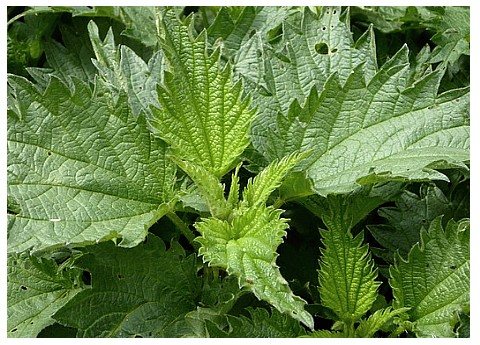
It is best to harvest nettle leaves in late spring or early summer. Below are several recipes using the plant:
— To prepare a nettle decoction, 1 tbsp. A spoonful of dry leaves of the plant should be poured with a glass of hot water, boiled and kept over low heat for about 10 minutes, then closed with a lid and left to infuse for about an hour.
After straining, the drug is ready for use. Take the product several tablespoons 3-4 times a day before meals. Treatment must be continued for a month.
— To prepare the following healing remedy, mix 50 ml of juice obtained from fresh nettle stems with 50 ml of milk. The drug must be used three times a day, before meals. It is necessary to prepare the product immediately before use - during storage it loses its beneficial properties. If a patient is intolerant to lactobacilli, the milk in this recipe should be replaced with water. Treatment should be continued for 2 weeks. After a week's break, the course of treatment can be repeated if necessary.
Reduced platelets in the blood of adult women and men: causes, treatment at home
Blood is the internal medium of the body. As long as all cellular elements of the blood are within normal limits, no pathological changes occur. However, when their number falls below acceptable values, this negatively affects the functioning of the body . For example, this happens in the case of a decrease in platelets.
What does it mean
Platelets are red blood cells, the main task of which is to ensure normal blood clotting .
When the number of platelets in the blood drops significantly, the cells are unable to perform their function properly. This pathological condition is called thrombocytopenia.
Its symptoms: an increase in the time required to stop bleeding, regular releases of blood from the mucous membranes of the nose and mouth, and the appearance of bruises of unknown origin on the body.
Low platelet levels may be congenital. In this case, they talk about a rare disease called hemophilia. If in the case of an insignificant decrease in platelets in the blood there is no talk of harm to health, then hemophilia is fraught with serious danger. Any bleeding can be fatal.
Throughout the day, the level of platelets in the blood may fluctuate slightly, deviating from the norm by 5-10 percent. In this case, there is no talk of any violations. In addition, a slight decrease in platelets is considered normal during menstruation and pregnancy. These symptoms are temporary and do not require any treatment.
Causes
Various diseases and pathological conditions can contribute to a decrease in platelets . These include:
- blood diseases: leukemia, anemia, etc.;
- the use of certain medications: antibiotics, diuretics, analgesics, cytostatics, antihistamines and psychotropic drugs;
- alcohol intoxication;
- hereditary diseases caused by decreased platelet production;
- period of menstruation, childbearing;
- diseases of infectious origin;
- exposure to heavy metals;
- increased platelet consumption;
- bone marrow damage.
Thus, a low level of platelets in the blood can be an independent disease or a symptom indicating the presence of serious problems in the body.
To correctly diagnose and determine the cause of thrombocytopenia, it is necessary to carefully examine the patient. A competent diagnosis will allow you to choose the right course of treatment and eliminate all possible health problems.
How to lift
If your platelet level decreases, you need to evaluate your condition. In certain cases, platelet levels drop to a critical level, which requires immediate treatment - on an outpatient or inpatient basis. However, most often the violation is so minor that it can be dealt with at home .
To raise your platelet levels on your own, use the following recommendations :
- Make a proper diet . Include greens, citrus fruits, kiwi, tomatoes and berries. Avoid undiluted coffee, alcohol, excessively fatty and high-calorie foods, and refined sugar.
- Include foods rich in omega-3 acids in your diet . These products include: fatty fish, eggs, flaxseed oil. A worthy alternative could be fish oil capsules.
- Follow a daily routine . Try to get up and go to bed on time, sleep at least 8 hours a day. Do not forget about vacation, which gives the body the opportunity to “reboot”.
- Drink liquid at room temperature. Drinking cold drinks disrupts the functioning of the gastrointestinal tract and contributes to poorer absorption of nutrients.
- Enrich your diet with minerals and vitamins . You can get them from healthy foods or from special vitamin and mineral complexes.
- Play sports . In physical activity, the emphasis should be placed not on strength training, but on “cardio”. Cardio exercises have the most positive effect on the body: they normalize blood circulation and strengthen the immune system.
The child has
A low level of platelets in a child's blood may be a sign of serious pathologies . Therefore, when the first symptoms of thrombocytopenia are detected, the baby should be shown to a pediatrician as soon as possible.
The following symptoms may indicate the presence of thrombocytopenia in a child: vomiting interspersed with blood, black feces, bruises, pink or red urine, subcutaneous hemorrhages, bleeding disorders, hemorrhages in the retina, headaches, rash.
The causes of childhood thrombocytopenia can be infectious diseases, tuberculosis, allergic reactions, the presence of malignant tumors, anemia, lupus erythematosus, blood diseases, diseases of parasitic origin, etc.
Treatment of the pathology depends on what caused it. If the low platelet count is a consequence of another disease, then medications are used that target the underlying cause of thrombocytopenia.
In the initial stages of the disease, treatment at home , without placing the child in a hospital. In this case, it is necessary to provide the baby with bed rest and create the right diet for him. Food should be rich in iron and hemoglobin, vitamins, and non-heat-treated fruits and vegetables.
In some cases, treatment is supplemented by the administration of immunoglobulins, the use of hormonal agents, and blood transfusions from a donor. In severe cases, when conservative treatments do not work, surgery is performed to remove the spleen.
Causes of thrombocytopenia during chemotherapy
Typically, congenital thrombocytopenias are part of hereditary syndromes. Acquired thrombocytopenia may have different causes. In particular, infusion media, replacement of blood loss, red blood cells, plasma can provoke a decrease in platelet levels.
The development of the problem of thrombocytopenia of distribution is possible in diseases that are accompanied by massive splenomegaly. The most massive group is represented by thrombocytopenia, which causes increased destruction of platelets. Their development is possible due to mechanical destruction of platelets, or in the presence of an immune component.
The cause of autoimmune thrombocytopenia can be transfusion of foreign blood, trans-immune - the penetration of maternal antibodies to the fetus through the placenta.
